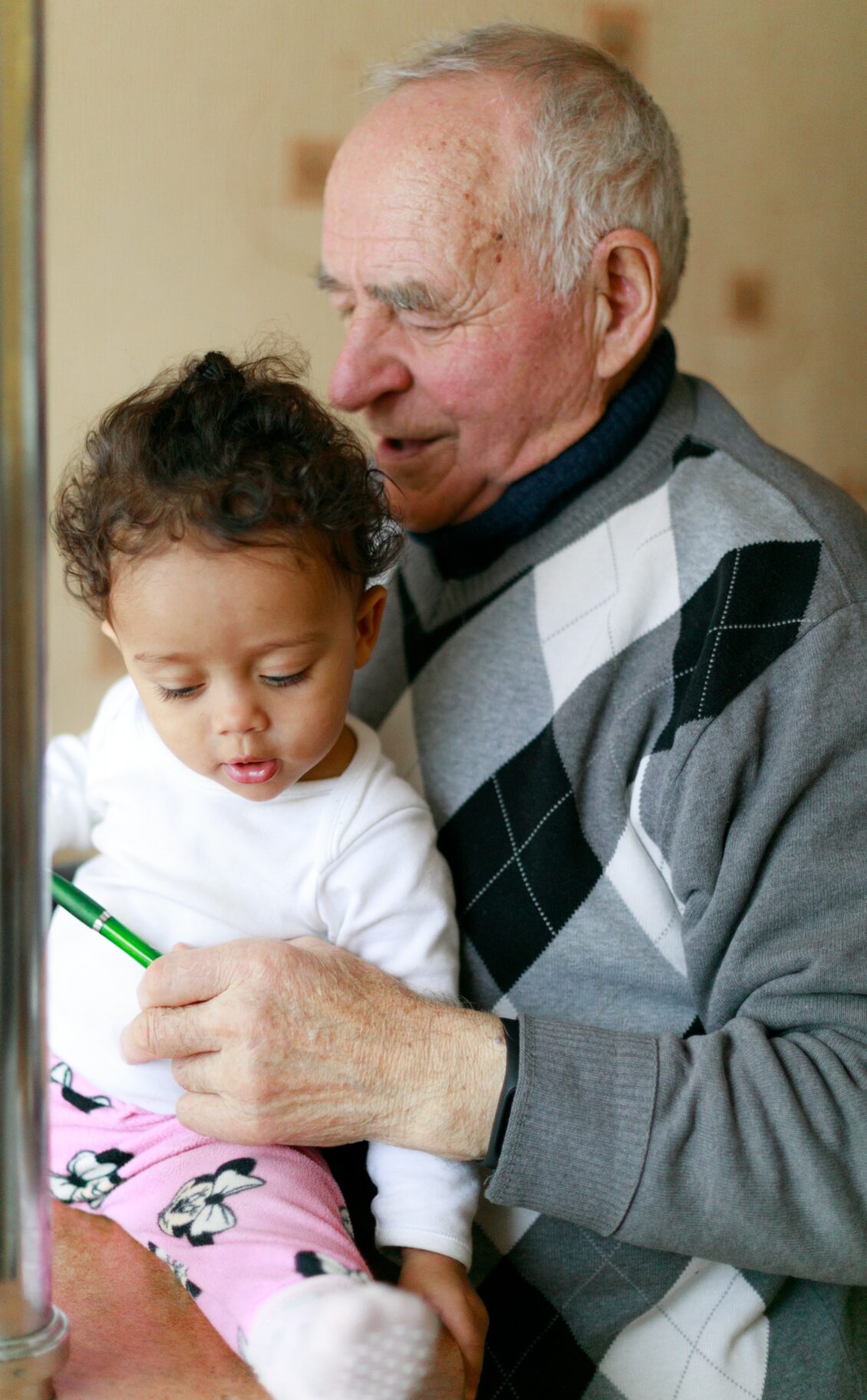

Explore the advantages of intergenerational care for seniors and children. Discover how regular interaction between different age groups can foster understanding and appreciation while reducing loneliness and depression in elderly people.

Many living in a care home will contest that it’s a lonely and isolated place. With the average age of those living in care homes edging increasingly higher, many seniors can feel disconnected from the joys of life they enjoyed when younger.
This is where intergenerational care steps in – uniting older adults and toddlers together to create an environment full of fun, learning and connection.
The benefits are becoming increasingly well-known, as more and more people recognize the positive impact it can have on both young children and seniors.
Intergenerational care is a form of childcare that involves mixing older adults with younger children in the same environment. This type of learning environment has been found to foster greater empathy and understanding among different generations while providing many other emotional and social benefits.
Intergenerational care is believed to promote empathy in young children by allowing them to experience life from a different perspective. Children learn not only about the elderly but also about themselves, as they gain insight into how their own behaviour impacts those around them.
In addition, the relationship that often develops between the elderly and the young helps children to develop a greater appreciation of people who are different from themselves.
As people age, they can become increasingly isolated from society—a problem known as loneliness. Intergenerational care provides seniors with a sense of purpose, as it gives them an opportunity to help and teach children. This in turn can lead to increased self-esteem and improved physical health. It has also been found to reduce depression in elderly people who are feeling lonely or isolated.
Intergenerational care has been shown to enhance learning experiences for young children. By engaging with different generations, children can learn about diverse cultures and gain valuable life skills.
In addition, the presence of older adults in an educational setting helps to create a more calm atmosphere that is conducive to learning.
This can create a more tolerant and understanding society, as people from different generations learn to appreciate each other’s perspectives.
The Aday, McDuffie, & Sims (1993) study provides an example of how effective intergenerational care can be. By pairing 19 young people (16-18 year olds) with 19 older adults (average age 71), the eight-week program was able to improve the young people’s attitude towards older adults.
To achieve this, the program organizers matched contact partners based on common interests and organized structured activities ranging from getting to know one another, sharing photographs, reminiscing groups, preparing a puppet show, making baskets and painting to music.
The combination of conditions and processes inherent in successful intergroup contact is evident in the Aday et al., (1993) intervention; from institutional support, cooperation and shared goals to equal group status, regular contact, close contact and self-disclosure. This highlights the potential of intergenerational care as an effective tool for fostering deeper understanding and appreciation between different generations.
Another study conducted by Couper, Sheehan and Thomas (1991) demonstrated the effectiveness of a one-day, five-hour intervention in positively influencing young people’s attitudes towards older adults. The structured activities incorporated cooperation and working towards common goals, as well as shared experiences, self-disclosure exercises, communication about values and recognition of positive aspects of both age groups.
This study highlights the potential for meaningful change to occur even with relatively brief contact and demonstrates how designing activities based on intergroup contact theory can be beneficial in reducing ageism. Although attitudes improved, deeper-rooted stereotypes were more difficult to change, which is an important area for further research.
Overall, this study shows the potential for intergenerational care to foster positive interactions between different age groups and reduce ageism. It also highlights the importance of incorporating design aspects that reflect processes central to intergroup contact theory when planning activities in order to maximize positive outcomes.
With an increased understanding of these principles, more effective interventions can be implemented which are beneficial both for the individuals involved and for society at large.
Intergenerational care can be improved by providing more support to childcare providers. This includes providing training to ensure that they are prepared for the different challenges posed by working with children from different age groups. In addition, a greater focus on diversity and inclusion should be adopted in order to ensure that all generations feel included and respected.
Intergenerational care should also be encouraged through policy initiatives and public awareness campaigns. This will help to increase understanding of the potential benefits of this type of childcare and encourage more people to participate in it. Finally, further research into the effectiveness of intergenerational care is necessary in order to determine how best to utilize this approach for maximum benefit.
Intergenerational care has the potential to be an invaluable asset for both young children and seniors alike, as it encourages deeper understanding and appreciation between different generations. With increased support and awareness of its potential benefits, more people can take advantage of this unique form of childcare.
Intergenerational care offers numerous benefits to both young children and seniors alike. By providing regular opportunities for interaction between different age groups, it can help to foster greater understanding and appreciation between them.
In addition, intergenerational care has been shown to reduce loneliness and depression in elderly people as well as enhance learning experiences for children. To maximize the potential of intergenerational care, greater awareness and support should be provided through policy initiatives and public campaigns. Ultimately, this will ensure that more people can take advantage of this unique form of childcare.